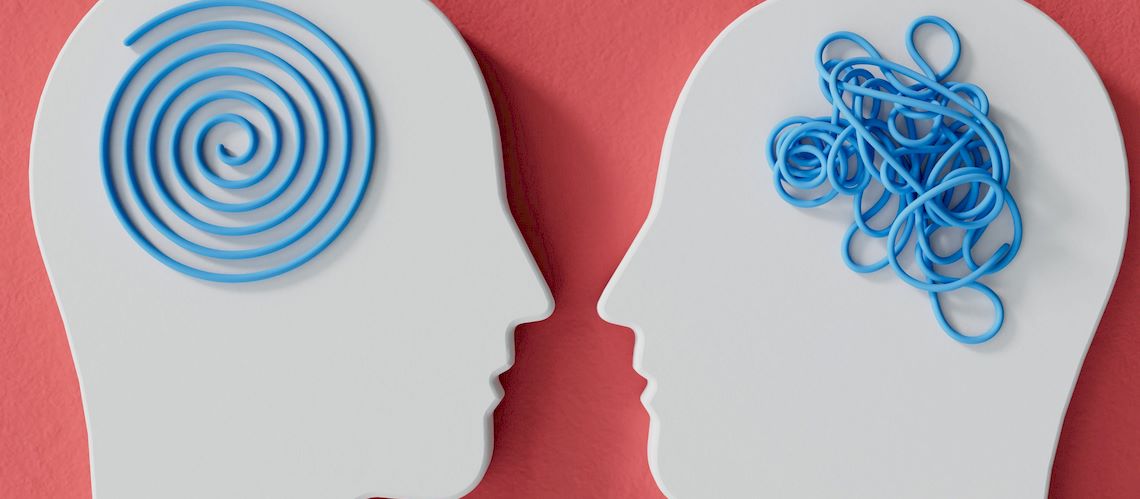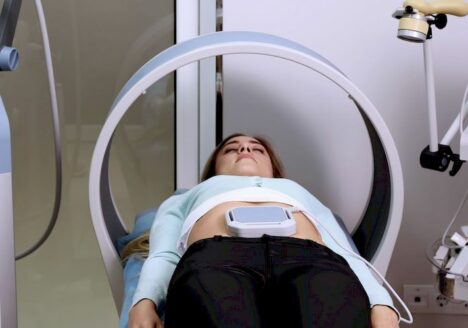The placebo and nocebo effects are powerful demonstrations of how the mind significantly influences the body, affecting physical health, symptom perception, and overall well-being. These phenomena underscore the profound connection between mental states and physiological responses, illustrating the intricate interplay within the Cognitive Self of the Self Matrix framework. By exploring the mechanisms, historical context, scientific evidence, and practical applications of placebo and nocebo effects, we can harness this knowledge to improve health outcomes and promote holistic well-being.
Definition
- Placebo Effect: The placebo effect occurs when a patient experiences real improvement in their condition after receiving a treatment with no therapeutic value. This phenomenon is driven primarily by the patient’s expectations and beliefs in the efficacy of the treatment. Key mechanisms include:
- Psychological Mechanisms:
-
-
- Expectation and Conditioning: Positive expectations and prior conditioning with effective treatments can trigger a placebo response. This involves a complex interplay between the patient’s beliefs and psychological state, leading to actual physiological changes (Benedetti 2014; Evans, 2004).
- Reward Pathways: The brain’s reward pathways, involving neurotransmitters such as dopamine and endorphins, are activated by placebo treatments, resulting in reduced pain perception and improved mood, similar to the effects of actual therapeutic interventions (Benedetti 2014).
-
- Physiological Mechanisms:
-
-
- Endorphin Release: Placebos can stimulate the release of endogenous opioids, natural painkillers produced by the body. This leads to a reduction in pain and enhancement of mood, demonstrating a direct physiological effect of the placebo response
- (Benedetti 2014)
- .
- Immune System Modulation: Positive expectations can enhance immune function, aiding in recovery from illness. This is evident in studies showing improved immune responses in patients receiving placebo treatments (Evans, 2004).
-
- Nocebo Effect: The nocebo effect is the negative counterpart of the placebo effect, where negative expectations and beliefs lead to adverse health outcomes. Mechanisms include:
- Psychological Mechanisms:
-
-
- Anxiety and Stress: Negative expectations can induce anxiety and stress, exacerbating symptoms and leading to negative health outcomes. This is often observed in patients who are warned about potential side effects of a treatment (Benedetti et al., 2007).
- Conditioning: Previous negative experiences with treatments or illnesses can heighten sensitivity to symptoms, leading to a stronger nocebo response. This involves psychological anticipation of adverse effects, which then manifest physically (Justman, 2015).
-
- Physiological Mechanisms:
-
-
- Cortisol Release: Negative expectations can trigger the release of cortisol, a stress hormone that suppresses immune function and increases pain perception, demonstrating a direct physiological pathway through which nocebo effects worsen health outcomes (Benedetti et al., 2006).
- Neurotransmitter Imbalance: Adverse expectations can alter neurotransmitter levels, leading to worsened symptoms and overall health deterioration, highlighting the powerful impact of the mind on physiological processes (Frisaldi et al., 2015; Kong and Benedetti, 2014).
-
Historical Context
The placebo effect has been recognized and utilized for centuries, dating back to ancient civilizations where sham treatments were often employed to invoke healing. In the 18th and 19th centuries, the placebo effect began to be systematically studied, particularly as a control mechanism in clinical trials. The understanding and use of placebos have evolved significantly, emphasizing the importance of patient perception and psychological components of healing (Harrington, 2000).
The nocebo effect, while less prominently featured in historical records, has been observed in various contexts. Historically, negative beliefs about health and treatments often exacerbated symptoms. For example, in the 19th century, patients who believed they were being poisoned experienced symptoms consistent with poisoning, despite the absence of any toxic substance (Justman, 2015).
Scientific Evidence
- Placebo Effect:
-
- Clinical Trials: Placebos are essential in clinical trials to establish the efficacy of new treatments. Numerous studies have documented significant improvements in patients receiving placebos, highlighting the robust impact of expectations. Benedetti (2014) discusses how placebo analgesia has shown significant pain reduction purely based on patient belief in the treatment.
- Neuroimaging Studies: Brain imaging studies have demonstrated that placebo treatments can activate brain regions associated with pain relief and emotional regulation. Evans (2004) highlights that placebo-induced activation of the prefrontal cortex and anterior cingulate cortex corresponds with pain relief and emotional well-being.
- Nocebo Effect:
-
- Clinical Observations: Patients informed about potential side effects of a treatment often report experiencing those side effects, even when given a placebo. This phenomenon is well-documented in studies where patients’ symptoms correlate directly with their expectations. Benedetti et al. (2007) illustrate that nocebo-induced symptoms such as headache or nausea arise from the anticipation of these effects.
- Neurobiological Studies: Research has shown that nocebo effects can alter brain activity related to pain and stress, leading to real physiological changes. Frisaldi et al. (2015), Benedetti et al. (2006), and Kong and Benedetti, 2014 provide evidence that negative expectations can heighten pain perception and stress responses through the activation of specific brain regions, such as the hippocampus and the insula.
Applications and Implications
Placebo Effect:
- Therapeutic Use:
Understanding the placebo effect can help clinicians enhance patient outcomes through positive reinforcement and patient education. By fostering positive expectations, clinicians can leverage the placebo effect to improve health outcomes. Evans (2004) discusses strategies for integrating placebo mechanisms into therapeutic practices without deception.Carlino, Vase, and Benedetti (2014) emphasize the role of expectation management in improving patient outcomes, suggesting that leveraging placebo effects can enhance performance and well-being while mitigating nocebo responses through careful communication.Specter (2011) highlights the profound influence of the patient-practitioner dynamic in strengthening placebo responses, emphasizing the critical role of trust and communication in amplifying therapeutic outcomes. Positive interactions can enhance patients’ belief in the efficacy of their treatment, thereby activating the placebo response.Vance (2016) underscores the brain’s inherent suggestibility as a tool clinicians can use to shape patients’ expectations. By framing information positively and fostering optimism, practitioners can enhance not only adherence to treatments but also the physiological benefits derived from belief. - Ethical Considerations:
The use of placebos in clinical practice must be carefully considered to avoid deception while maximizing therapeutic benefit. Ethical guidelines emphasize transparency and patient autonomy in the use of placebos. Benedetti (2014) addresses the ethical challenges and potential strategies for using placebos ethically in medical practice.
-
Nocebo Effect:
- Patient Communication:
Clinicians need to be mindful of how they communicate potential side effects to avoid inducing nocebo responses. Clear, positive communication can help minimize anxiety and stress, reducing the likelihood of nocebo effects. Benedetti et al. (2007) suggest communication strategies that focus on framing information in a way that minimizes negative expectations.Specter (2011) cautions against overly detailed or negatively framed descriptions of potential side effects, noting that such communication can inadvertently induce adverse outcomes through nocebo responses.Vance (2016) elaborates on how even subtle cues in communication can influence outcomes, highlighting the importance of carefully crafted messaging to mitigate unnecessary negative expectations. - Clinical Practice:
Awareness of the nocebo effect can help clinicians develop strategies to mitigate its impact on patient outcomes. This includes managing patient expectations and providing supportive care. Frisaldi et al. (2015) highlight practical approaches to reducing nocebo responses, such as emphasizing the benefits and carefully managing risks. - Ethical Considerations:
Balancing the need for informed consent with the risk of inducing nocebo effects is a critical ethical challenge. Clinicians must navigate this balance to ensure patient well-being while maintaining transparency. Justman (2015) discusses the ethical dilemmas and potential solutions for addressing nocebo effects in clinical settings.
- Patient Communication:
-
The Role of Communication in Placebo and Nocebo Effects
The placebo and nocebo effects reveal the powerful influence of communication on beliefs, expectations, and outcomes. While these effects are well-documented in clinical settings, their underlying mechanisms—trust, suggestibility, and framing—have implications beyond medicine.
Harnessing Positive Framing Across Contexts
Positive communication fosters trust, enhances confidence, and creates expectations of success. Specter (2011) highlights the transformative role of trust in activating the mind’s ability to influence physical and emotional well-being. In clinical settings, this dynamic strengthens belief in treatment efficacy, but the same principle applies to personal relationships, education, and leadership, where trust and positive reinforcement can unlock potential.
Vance (2016) builds on this, demonstrating how suggestion shapes not just health outcomes but also behavior and performance. For example, emphasizing strengths and opportunities rather than risks or weaknesses can create a mindset conducive to growth and achievement, much like the placebo effect enhances recovery through positive expectation.
Mitigating Negative Communication
Conversely, communication that amplifies doubt or fear can trigger nocebo-like outcomes, hindering performance and well-being. Specter (2011) warns that overly detailed or negative discussions—whether about treatment risks or personal challenges—can magnify anxiety and create self-fulfilling prophecies. This aligns with Vance (2016), who highlights the subtle power of negative cues, such as critical tones or dismissive attitudes, to shape perception and behavior adversely.
Practical Applications for Communication
To align with these findings and apply them broadly:
- Emphasize Strengths and Solutions: Whether in healthcare, personal relationships, or leadership, focus on potential and opportunities to instill confidence and encourage action.
- Balance Information: Present challenges as manageable rather than insurmountable, fostering a sense of control rather than fear.
- Cultivate Trust and Suggestibility: Use clear, supportive communication to create an environment that encourages belief in positive outcomes.
By leveraging the principles of trust and suggestibility, as highlighted by Specter (2011) and Vance (2016), individuals can enhance outcomes not just in health but in personal growth, leadership, and interpersonal dynamics.
Interconnectedness of Mind and Body
The placebo and nocebo effects illustrate the profound interconnectedness of the mind and body. Positive or negative expectations can lead to real physiological changes, demonstrating that mental states significantly influence physical health.
This interplay is similar to the impact of power poses, where changes in body posture can affect mental and emotional states (Cuddy, 2015). This interplay is further supported by Carlino, Vase, and Benedetti (2014), who demonstrate that positive and negative expectations directly impact physical performance, highlighting the profound integration of mind and body.
Specter (2011) expands this understanding by emphasizing the mind’s ability to harness the body’s natural healing processes through belief and trust, while Vance (2016) explains how suggestibility shapes health outcomes. Vance demonstrates that the brain’s response to positive suggestions—whether in placebo treatments or other therapeutic settings—can significantly enhance both mental and physical well-being.
Understanding this bidirectional relationship can enhance approaches to holistic health and well-being.
Philosophical Perspectives
The insights from ancient philosophers like Aristotle, who emphasized the harmony between the body and mind for achieving eudaimonia (human flourishing), resonate with modern understandings of placebo and nocebo effects. Aristotle’s advocacy for balance and moderation aligns with the need to foster positive expectations and minimize negative beliefs for optimal health (Harrington, 2000).
Aristotle believed that physical and mental well-being are interconnected, and modern research on placebo and nocebo effects supports this holistic view. By maintaining a positive mindset and balanced expectations, individuals can achieve better health outcomes, reflecting Aristotle’s broader vision of achieving a balanced and fulfilling life (Evans, 2004).
Case Studies and Testimonials
- Placebo Effect: Patients with chronic pain conditions often experience significant relief from placebo treatments, demonstrating the power of belief in healing. For instance, a study on placebo analgesia showed that patients reported significant pain reduction when they believed they were receiving an effective painkiller (Benedetti, 2014). Another study highlighted that patients with depression who believed in the efficacy of their treatment experienced substantial improvements, even when given a placebo (Evans, 2004).
- Nocebo Effect: Patients informed about potential side effects of medications frequently report experiencing those side effects, even when given an inert substance. For example, a study found that patients who were told about potential gastrointestinal issues from a medication experienced these symptoms, even when taking a placebo (Benedetti et al., 2007). Another example includes patients who experienced increased pain and discomfort when they anticipated negative outcomes from a treatment, illustrating the nocebo effect’s powerful impact (Benedetti et al., 2006).
Conclusion
The placebo and nocebo effects underscore the significant influence of the mind on the body. By harnessing positive expectations and minimizing negative beliefs, clinicians can enhance therapeutic outcomes and promote overall well-being. This holistic approach aligns with ancient philosophical insights and modern scientific understanding, offering a comprehensive perspective on health and healing.
Understanding these effects not only provides valuable insights for clinical practice but also emphasizes the importance of mental and emotional well-being in achieving physical health. Integrating this knowledge into the Self Matrix framework can help individuals cultivate a balanced, healthy, and fulfilling life.
References
Benedetti, F. (2014) Placebo effects: from the neurobiological paradigm to translational implications. Neuron, 84(3), pp. 623–637.
Benedetti, F., Lanotte, M., Lopiano, L. & Colloca, L. (2006) The biochemical and neuroendocrine bases of the hyperalgesic nocebo effect. The Journal of Neuroscience, 26(46), pp. 12014–12022.
Benedetti, F., Pollo, A., Lopiano, L. & Lanotte, M. (2007) When words are painful: unraveling the mechanisms of the nocebo effect. Neuroscience, 147(2), pp. 260–271.
Carlino, E., Vase, L., & Benedetti, F. (2014) The effects of placebos and nocebos on physical performance. In: F. Benedetti, P. Enck, E. Frisaldi & M.S. Schedlowski (eds.) Placebo. Berlin: Springer, pp. 149–157.
Cuddy, A.J.C. (2015) Presence: bringing your boldest self to your biggest challenges. New York: Hachette Audio.
Evans, D. (2004) Placebo: mind over matter in modern medicine. London: HarperCollins.
Frisaldi, E., Piedimonte, A. & Benedetti, F. (2015) Placebo and nocebo effects: a complex interplay between psychological factors and neurochemical networks. The American Journal of Clinical Hypnosis, 57(3), pp. 267–284.
Harrington, A. (ed.) (2000) The placebo effect: an interdisciplinary exploration. Cambridge, MA: Harvard University Press.
Justman, S. (2015) The nocebo effect: overdiagnosis and its costs. New York: Palgrave Macmillan.
Kong, J. & Benedetti, F. (2014) Placebo and nocebo effects: an introduction to psychological and biological mechanisms. In: F. Benedetti, P. Enck, E. Frisaldi & M.S. Schedlowski (eds.) Placebo. Berlin: Springer, pp. 3–15.
Specter, M. (2011) The power of nothing. The New Yorker.
Vance, E. (2016) Suggestible you: the curious science of your brain’s ability to deceive, transform, and heal. Washington, DC: National Geographic.




